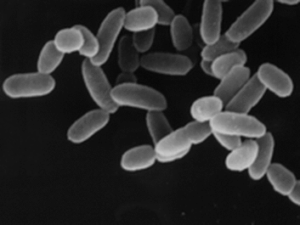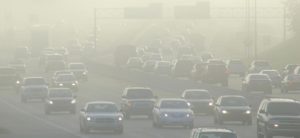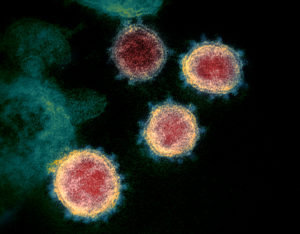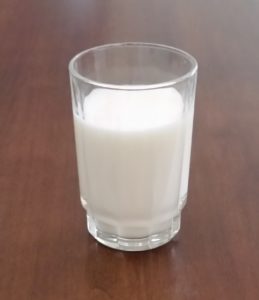 Scientists have suggested for decades that a person's diet may play a role in the development of intestinal bowel disease (IBD), such as Crohn's disease and ulcerative colitis. This is because these diseases are dramatically increasing in industrialized countries (e.g. USA and Canada) where people eat western diets with lots of ultra-processed foods (additives and artificial ingredients) and a low fiber intake.
Scientists have suggested for decades that a person's diet may play a role in the development of intestinal bowel disease (IBD), such as Crohn's disease and ulcerative colitis. This is because these diseases are dramatically increasing in industrialized countries (e.g. USA and Canada) where people eat western diets with lots of ultra-processed foods (additives and artificial ingredients) and a low fiber intake.
A recent large world-wide study found that a higher intake of ultra-processed foods was associated with an increased risk of developing intestinal bowel diseases. This association was seen for all ultra-processed foods, as well as different types of ultra-processed foods - such as processed meats, soft drinks, refined sweetened foods (e.g. packaged desserts, sugary cereals) and salty foods and snacks.
However, this association with IBD was not seen with higher intakes of white meat, red meat, dairy, starch, fruit, vegetables, and legumes. The 116,087 participants were from 21 countries and were followed for 9 to 11 years.
Processed and ultra-processed foods often include many non-natural ingredients and additives such as artificial flavors and colors, sugars, stabilisers, emulsifiers, and preservatives. Emulsifiers are added to most ultra-processed foods to aid texture and extend shelf life. Even "natural flavors" is a laboratory concoction used to alter a food product's taste.
Other studies have found increased rates of gut inflammation and alteration of gut microbes from foods containing emulsifiers (e.g. carboxymethylcellulose, polysorbate 80, soy lecithin, carrageenan), maltodextrin, and titanium dioxide (frequently in nanoparticle form).
Bottom line: For health, eat a diet rich in fruits, vegetables, whole grains, legumes, nuts, and seeds. Eat less fast food, ultra-processed foods, processed meats, sugary packaged sweets, and soft drinks. Read ingredient lists!
From Science Daily: Ultra-processed food linked to higher risk of IBD
A higher intake of ultra-processed food is associated with higher risk of inflammatory bowel disease (IBD), finds a study published by The BMJ today. ...continue reading "Ultra-Processed Foods and Intestinal Bowel Disease"

 Carbon dioxide levels in the atmosphere reached a new high in May 2021 - 419 parts per million (ppm). This monthly average is the highest level in more than 4 million years! Yikes! (By the way, last year the highest level ever recorded occurred in May 2020.) Well... we topped that number this year.
Carbon dioxide levels in the atmosphere reached a new high in May 2021 - 419 parts per million (ppm). This monthly average is the highest level in more than 4 million years! Yikes! (By the way, last year the highest level ever recorded occurred in May 2020.) Well... we topped that number this year.
 Today is Endangered Species Day! It is a day to think about the beauty (and fragility) of life. Support efforts to protect and save endangered species and their habitats!
Today is Endangered Species Day! It is a day to think about the beauty (and fragility) of life. Support efforts to protect and save endangered species and their habitats!
 Which cities in the US have the worst forms of air pollution? Los Angeles remains the city with the worst ozone pollution in the nation. Fairbanks, Alaska is currently the metropolitan area with the worst short-term particle pollution for the first time. And Bakersfield, California returned as the most polluted for year-round particle pollution (for a second year in a row).
Which cities in the US have the worst forms of air pollution? Los Angeles remains the city with the worst ozone pollution in the nation. Fairbanks, Alaska is currently the metropolitan area with the worst short-term particle pollution for the first time. And Bakersfield, California returned as the most polluted for year-round particle pollution (for a second year in a row).

 Pregnant women now have another reason to try to limit exposure to flame retardants while pregnant - having higher levels of flame retardants in their blood during pregnancy is associated with an increased risk of preterm birth.
Pregnant women now have another reason to try to limit exposure to flame retardants while pregnant - having higher levels of flame retardants in their blood during pregnancy is associated with an increased risk of preterm birth. It's official! The
It's official! The  Many grocery stores now offer several brands of organic milk and eggs. But faced with choices, how do you choose the best organic brands? That is, how do you know which brands really follow organic practices, and which are factory farms playing at sort-of organic?
Many grocery stores now offer several brands of organic milk and eggs. But faced with choices, how do you choose the best organic brands? That is, how do you know which brands really follow organic practices, and which are factory farms playing at sort-of organic? This also explains why factory-farm organic foods are typically much cheaper than organic foods from small farms or cooperatives. The small farms are being squeezed out. Organic is more than just being antibiotic and pesticide free. You get what you pay for!
This also explains why factory-farm organic foods are typically much cheaper than organic foods from small farms or cooperatives. The small farms are being squeezed out. Organic is more than just being antibiotic and pesticide free. You get what you pay for!